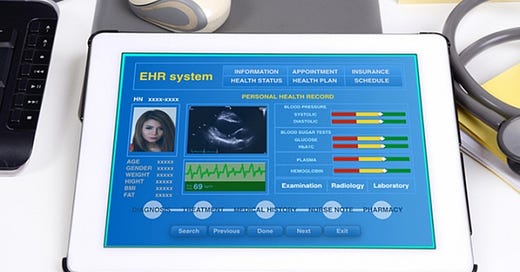Electronic Health Record Modernization: Nursing Excellence through Virtual Care
The U.S. Department of Veterans Affairs (VA) is undergoing an Electronic Health Record Modernization (EHRM) across the entire enterprise, with the goal of creating a shared Federal Electronic Health Record (FEHR). In 2017, the Veterans Health Administration (VHA) joined with the Department of Defense (DOD) to plan for the transition to a modernized, combined EHR platform to capture the healthcare delivery of both active-duty members and veterans.1 The VHA anticipated transitioning to the new EHR across all medical centers nationally over a period of 10 years—“the largest EHR transition in history.”1 The first rollout was in October 2020 in Spokane, Washington, USA.1
Implementing a new EHR within an organization is challenging and requires flexibility and adaptability from the implementation team.2 The VHA recognized that “EHR transitions tend to be highly disruptive, affecting health systems’ productivity, efficiency, care quality, and employee satisfaction.”3 A multi-site qualitative analysis was conducted of end-users following a new EHRM implementation at four U.S. healthcare systems. Several lessons learned included the need to provide scheduled time for EHR trainings, to reduce workload, and to incorporate robust internal support.4 To lessen some of these challenges while optimizing the opportunity to deliver safe and effective care to veterans, a multidisciplinary team was established within the VHA—the National EHRM Supplemental Staffing Unit (NESSU).
The NESSU consists of experienced VHA staff from across the country who represent various interdisciplinary sections, including primary care providers, nursing (inpatient and outpatient), behavioral health, pharmacy, and scheduling. This team is deployed to assist in the preparation (pre-Go Live), activation (Go Live), and sustainment (post-Go Live) as the FEHR implementation is rolled out across the VHA Enterprise.
At Go Live, the new FEHR is activated, prompting facilities to begin working solely from that platform for all aspects of veteran care. It is a critical time that requires all hands-on deck to facilitate a smooth transition, optimize various workflows, and troubleshoot concerns that arise. The NESSU’s mission is to support the clinical and administrative functions at VHA medical facilities to sustain services and honor America’s veterans during VA’s EHRM. The vision for NESSU is to offer services that strengthen a facility’s productivity mitigation plan during the pre- and post-Go Live phases of deployment, based on the teams’ knowledge and experience from multiple deployments across the enterprise.
Want to read more? Head here: https://doi.org/10.30953/thmt.v9.528




